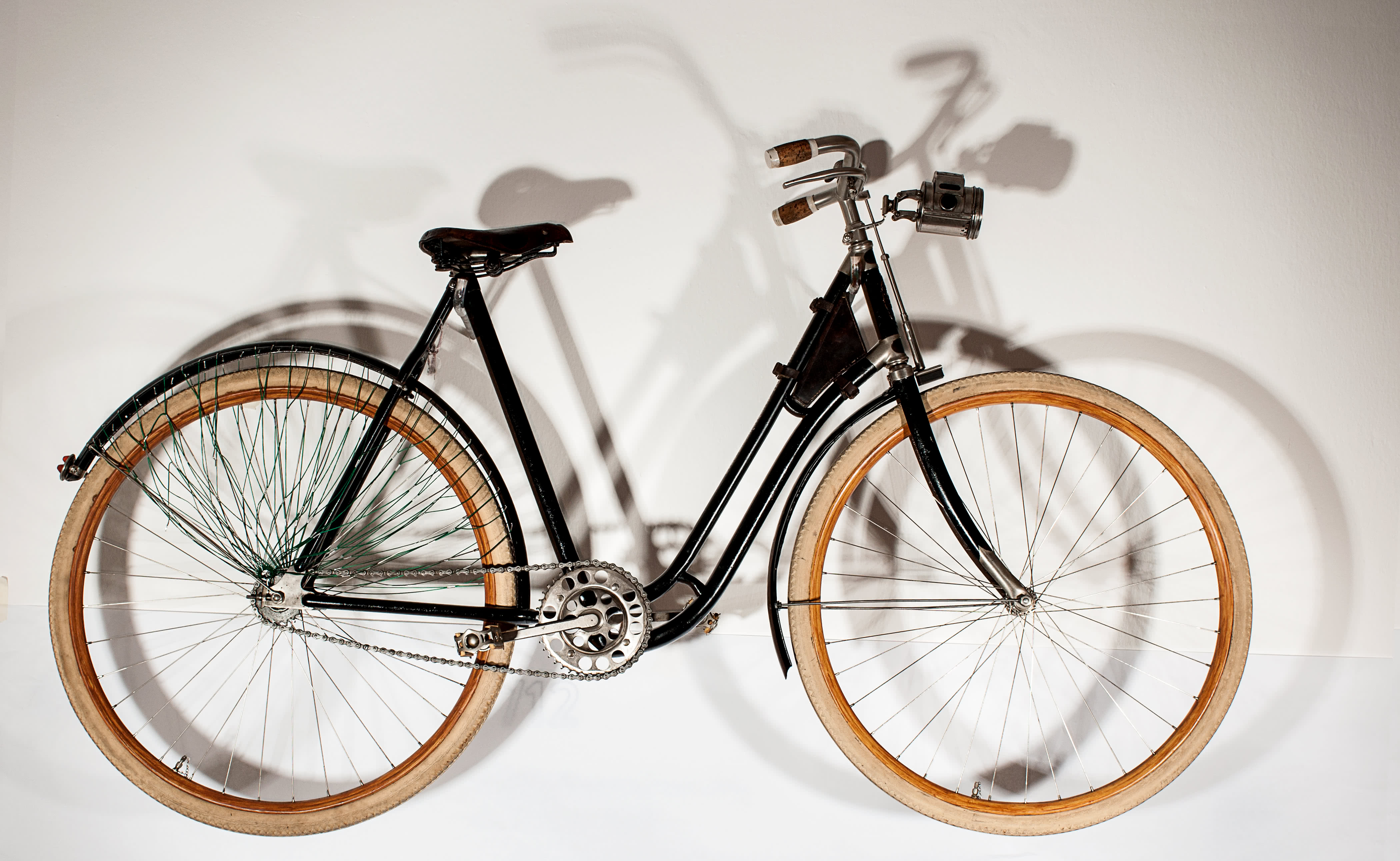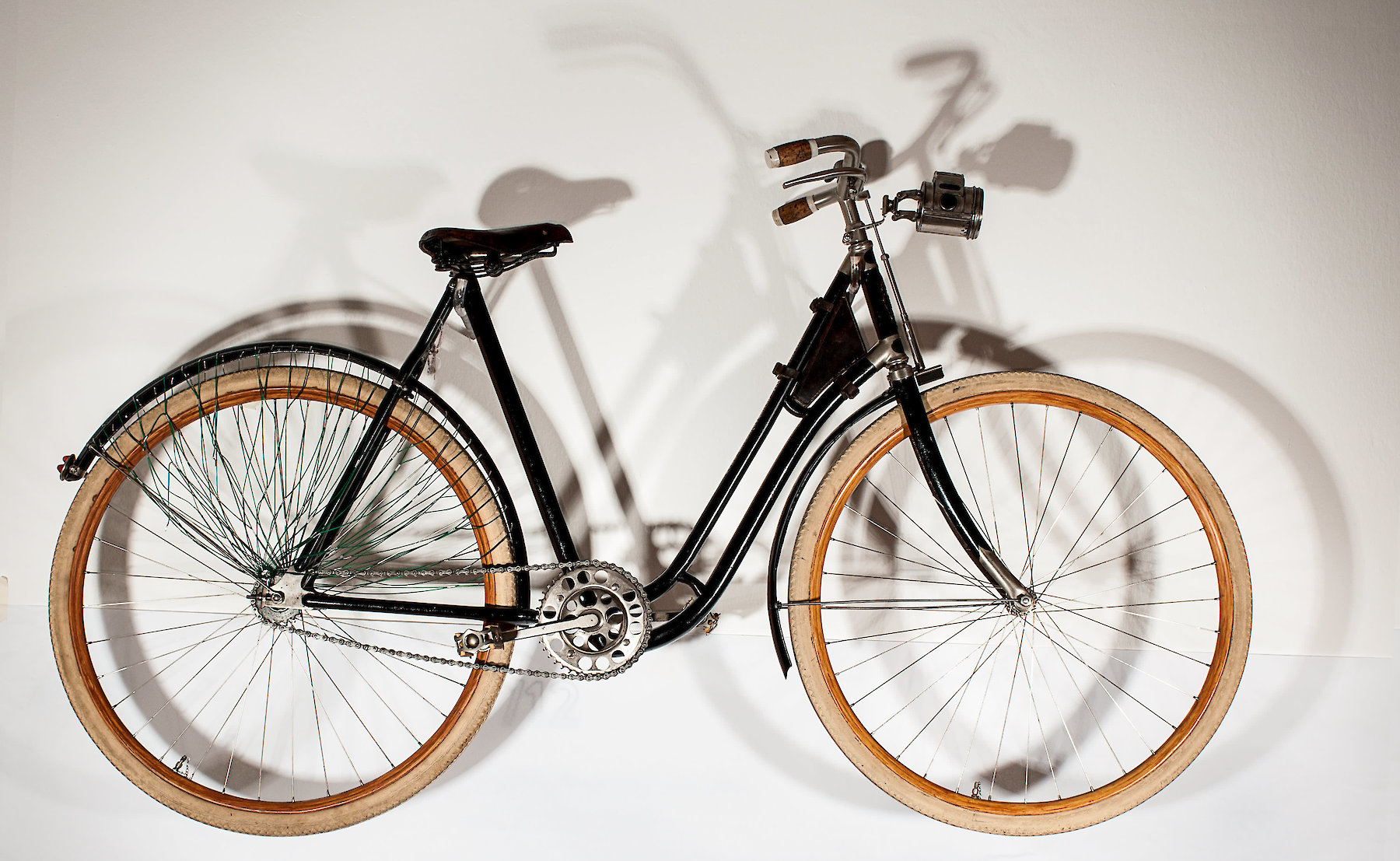
The women’s bicycle from 1900 typically not only features a clothing net, but also a carbide lamp as a light source. This gas lamp was in use from the 1890s for buildings, bicycles and other vehicles. The fuel used was calcium carbide, which in combination with water released ethine gas for lighting. Some carbide lamps were popular until the 1950s because they were very lightweight, bright and relatively inexpensive. Then they were replaced by electric lighting.
Ladies’ Bicycle Puch, Year of Manufacture 1900
A “Windischer” (a Slovene) Brings Mobility to Austria
At the time when Janez Puh from Lower Styria (translator’s note: which is part of Slovenia today) moved up the ladder from small craftsman to factory owner, Graz transformed from a sleepy provincial city into an industrial and commercial centre. As it was linked to the south axis of the railway network by the route from Graz to Mürzzuschlag in 1844, the city was catapulted into the Industrial Age. Beside the Puch factories, other large companies such as the Reininghaus and Puntigam breweries, the Andritz machine works, the Weitzer railcar factory or the D. H. Pollak & Co shoe factory (today Humanic) tempted thousands of jobseekers from surrounding areas to come to the city.
Model VII, Frame Number 3197
Lender: Lampls Fahrradmuseum (Lampl’s Bicycle Museum), Werndorf
Lampls Fahrradmuseum (Lampl's Bicycle Museum) / Photo: Edin Prnjavorac
Bicycling in Graz
Graz also kept pace with the development of the modern bicycle from the 1880s onwards. Especially the members of the Graz Bicycle Club inspired the local mechanics with their imported high wheelers. From 1890 onwards, the use of the lower safety bicycle greatly increased the popularity of cycling. In 1888, the first bicycle manufacturer in Graz, Benedict Albl, founded the Meteor bicycle factory, which among other things produced a chainless bicycle. Cycling schools and the profession of the bicycle instructor emerged. The Graz-based textile manufacturer Vinzenz Oblack specialised in cycling fashion and attracted international attention for his water-repellent suit fabrics. Finally, the Puch Factory, the largest bicycle and automobile factory, was founded.
The Puch Factory in Graz
The Puch Factory was founded by Janez Puh, a Slovene from Lower Styria. Johann Puch, as he soon called himself, started his career in the Graziosa bicycle factory in Annenstraße. In 1889, he opened his own business. In 1900, when the racing cyclist Josef Fischer came first in the Classic cycle race of Bordeaux-Paris on a bicycle made by Puch, his products became famous in one swoop.
In 1908, the 100,000th Puch bicycle left the assembly line and the Puch Factory already produced motorcycles and cars. From the outset, Johann Puch, in addition to racing bicycles, also offered cheap models and instalment payments to stimulate the spread of bicycles, which were still an expensive product. The Puch Factory developed into one of the largest employers in Graz.
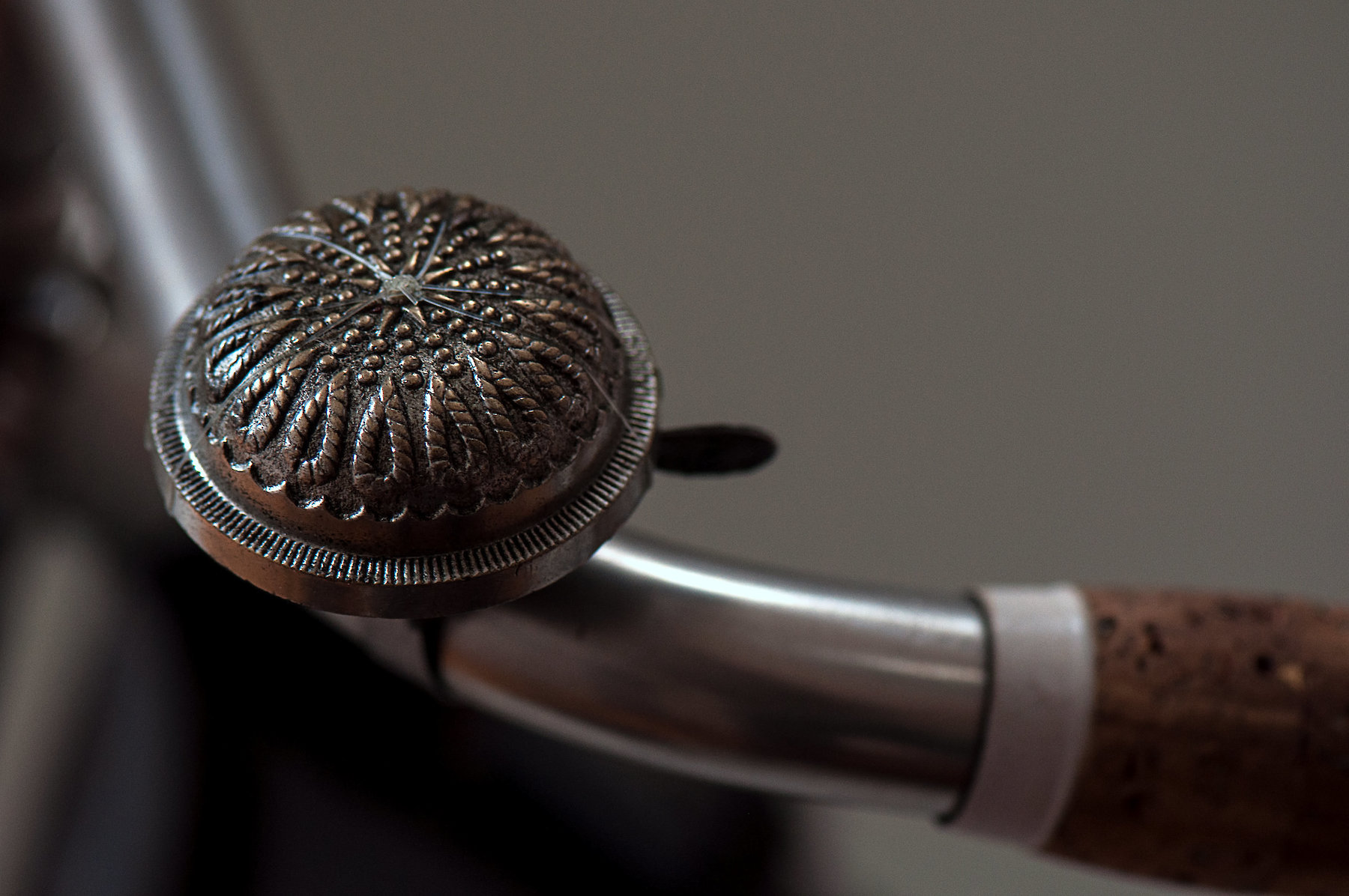
The Bicycle as a Luxury Product
At the end of the 19th century, cycling was still looked at with great scepticism. In the beginning it served purely as sports equipment for young upper-class gentlemen. Its acceptability was assessed ambivalently, not least because of the casual clothing. It was also perceived as dangerous in road traffic.
A big step towards mass suitability was the spread of the lower safety bicycle, which was less crash-prone. The popularity and social recognition of cycling were helped by clubs that were founded in large numbers from the 1880s onwards and differed according to the socio-structural characteristics of their members.
However, distrust towards men riding bicycles was much lower than the broad scepticism towards women riding bicycles.
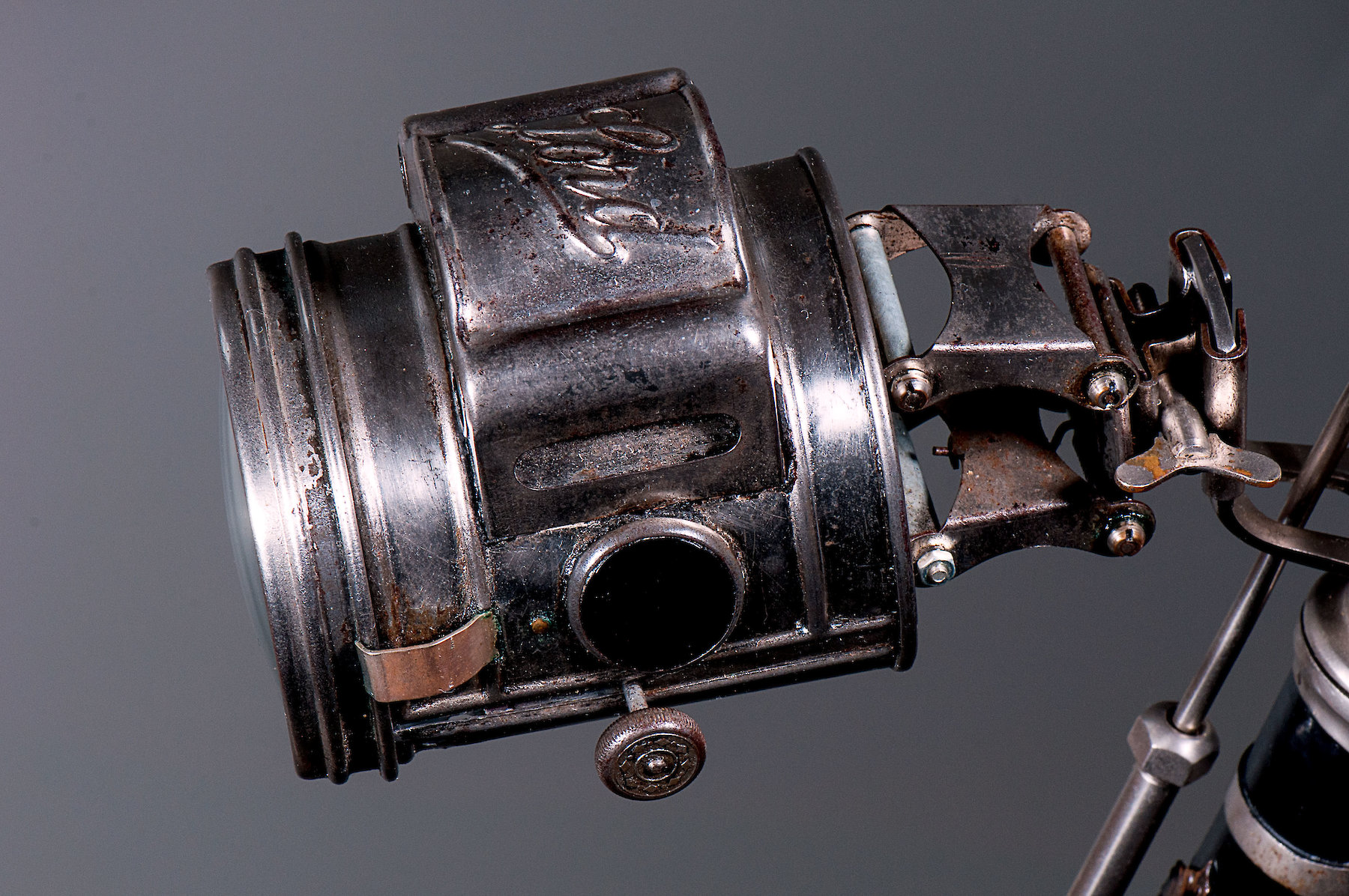
Carbite lamp
The women’s bicycle from 1900 typically not only features a clothing net, but also a carbide lamp as a light source. This gas lamp was in use from the 1890s for buildings, bicycles and other vehicles. The fuel used was calcium carbide, which in combination with water released ethine gas for lighting. Some carbide lamps were popular until the 1950s because they were very lightweight, bright and relatively inexpensive. Then they were replaced by electric lighting.
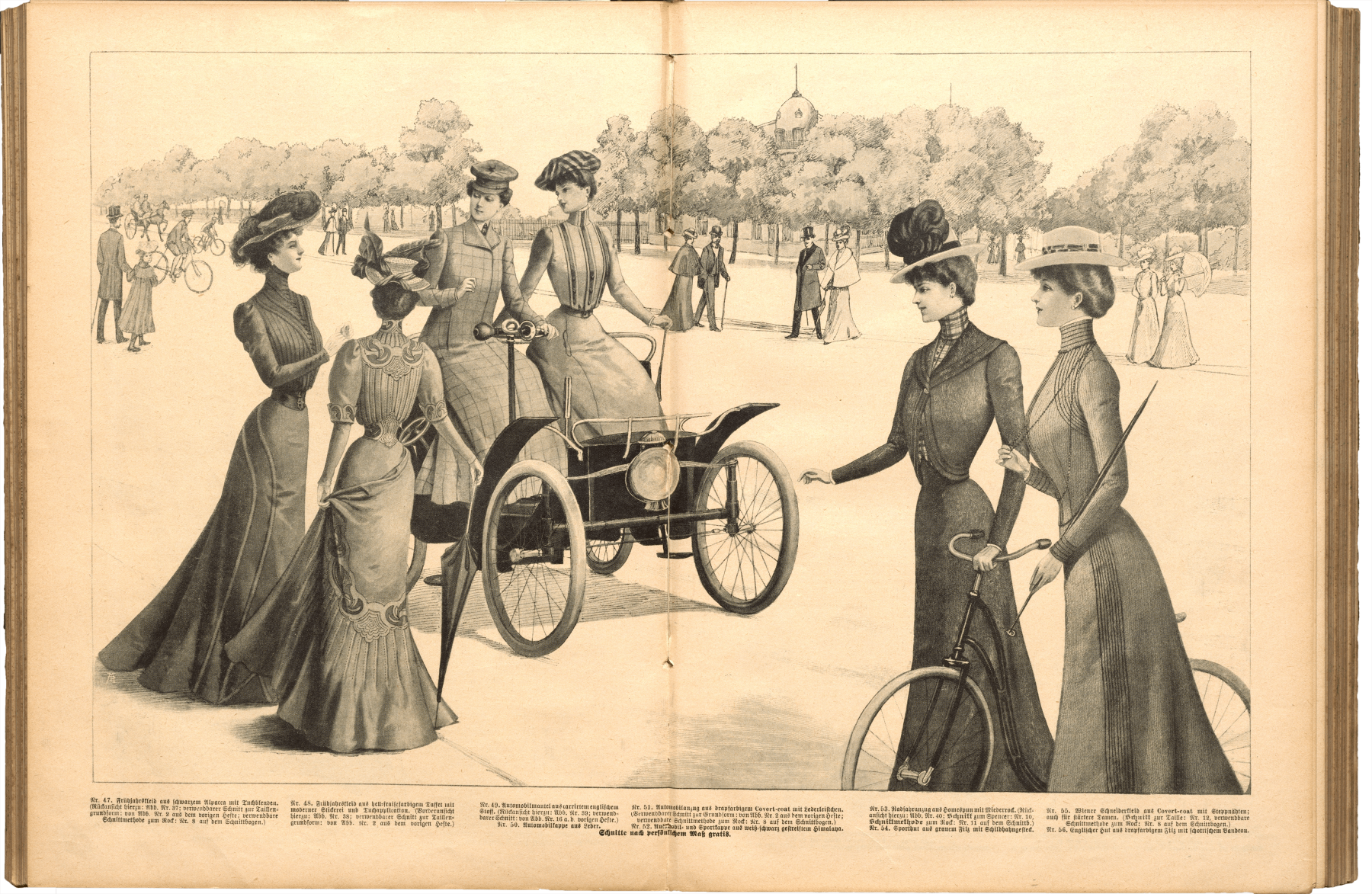
Sportive Emancipation
At first, cycling for women was a controversial affair as it was considered improper for bourgeois women—and only for these this expensive piece of sports equipment came into question—to show physical strain, a sweaty face, their ankles or even their calves in public.
Also the fashion of floor length dresses with corsets was rather inconvenient for cycling. In 1893, Elise Steiniger, Vicenza Wenderich and others founded the Ladies’ Bicycle Club where the wives and daughters of the gentlemen of the Graz Bicycle Club regularly met.
